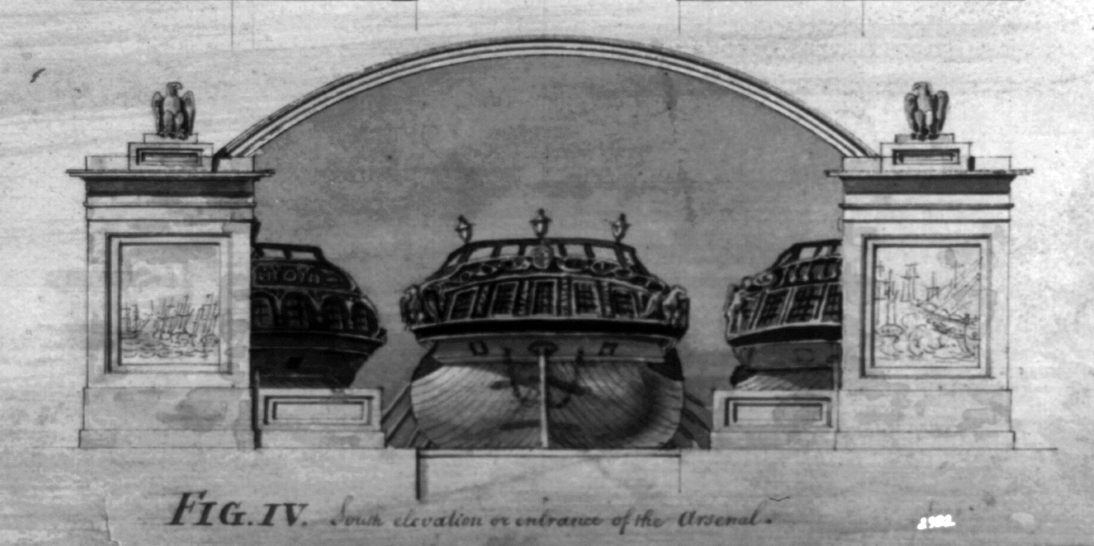 I have begun the research for a book on the history of the Washington Navy Yard and its neighborhood in earnest. As always, I have come across some piece of arcana which, while not being a great turning point in history (especially as the thing in question was never built) does give some insight into the state of the United States in 1802.
I have begun the research for a book on the history of the Washington Navy Yard and its neighborhood in earnest. As always, I have come across some piece of arcana which, while not being a great turning point in history (especially as the thing in question was never built) does give some insight into the state of the United States in 1802.
Thomas Jefferson took office as President on March 4, 1801, and immediately set about making changes, particularly in how the Navy was to be operated. With the Quasi-War against France having come to a reasonably amicable solution the previous September, there was no longer the need for the large 74-gun ships that the US Navy had been building – including one that was to be built at the new Washington Navy Yard.
Jefferson felt that the only ships needed were small ones, able to protect the shores and inlets of the United States; there was no longer a need for larger, ocean-going vessels. He also felt that these smaller vessels should be laid up until actually needed. Therefore, in his second annual message, in 1802 (his version of the State of the Union address) Jefferson laid out his plan to protect the ships: a dry-dock.
In order to put this plan into action, Jefferson turned to Benjamin Latrobe, who had already shown his mettle in reconfiguring and building the Capitol (or that small part that was available when Jefferson took office)
Jefferson asked Latrobe to design the dry-dock, with a series of locks to get the ships up from the Eastern Branch and into the dock. This would allow the ships to be pulled entirely from the water, which would give them a much longer life. It was well-known that a ship built in Venice, but then pulled from the water, had survived some 80 years without decay.

Detail of Latrobe’s dry-dock drawings, showing the rump of a ship that has been put into the dock and propped up on timbers. (LOC)
Latrobe immediately set to work and produced drawings of both the dry-dock and the locks. Unfortunately, others were not as sanguine about their use, and an 1824 history of the Navy says that they “became with many a subject of ridicule.” Others opposed them simply because they opposed the idea of a Navy entirely. In the end, Congress refused to fund the project, and Latrobe had to resort to begging letters to Jefferson to be paid for the work he had done.
A few years later, Latrobe became the “Engineer of Navy Department” and designed the Latrobe Gate at the end of 8th Street SE, thus leaving his permanent mark on the Navy Yard. Jefferson’s dry-docks remain only as series of exquisite drawings rendered by Latrobe.
Jefferson himself returned to his idea of a Navy consisting of smaller ships, some of which were built at the Navy Yard.
